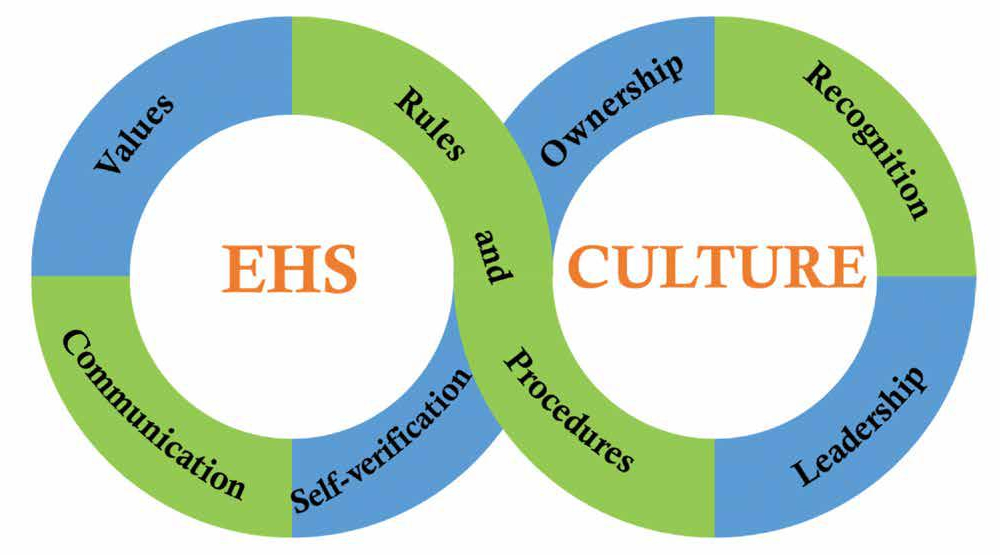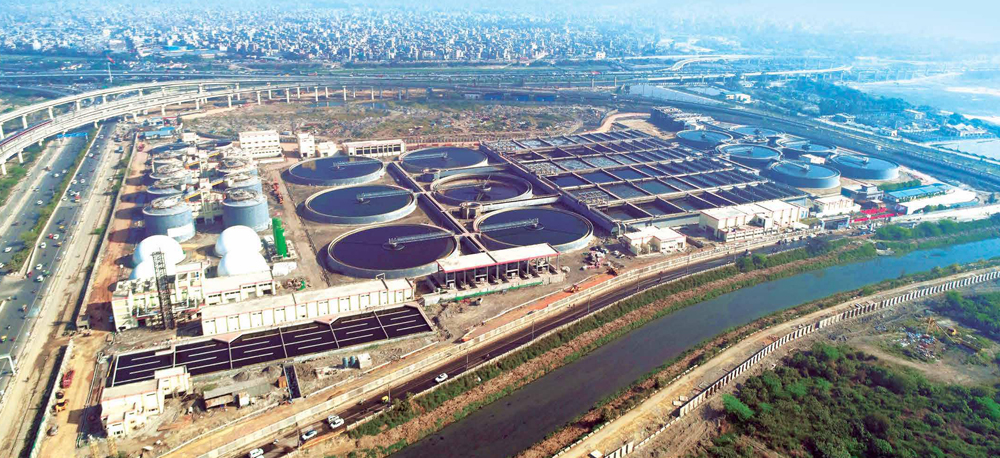EHS culture transformation at WET IC

An organization’s EHS culture is the product of individual and group values, attitudes, perceptions, competencies, and patterns of behaviour that determine its commitment, quality, and competence towards the EHS Management System (EHSMS). Culture is why we do what we do and the way we do things. “Workplace EHS culture is influenced by leadership, management, supervision, priorities, peer pressure, workplace conditions, design, and executional targets,” informs K S Sudheesh Kumar, Head – EHS, WET IC. “Extremely enigmatic, culture results from a combination of both deliberate and non-deliberate consequence of cause and effect.”

Some continuous and deliberate changes in WET IC have been digitalization, emphasis on continuous development & training programmes for ESH and the increase in SOPs.
Murali Mohan Murthy
Head – LWS I Business Segment

WET IC’s recently handed over STP project at Coronation Pillar in Delhi that had an excellent EHS record
Murali Mohan Murthy, Head – LWS I Business Segment, believes that culture changes mirror behavioural, organizational, and psychological changes. “Some continuous and deliberate changes in WET IC have been digitalization, which has enhanced efficiency and improved safety standards, emphasis on continuous development and training programmes for EHS that have increased awareness for safety among employees and workmen, and the increase in SOPs, which have enhanced knowledge and helped create a safer workplace.”

Workplace EHS culture is influenced by leadership, management, supervision, priorities, peer pressure, workplace conditions, design, and executional targets. Extremely enigmatic, culture results from a combination of both deliberate and non-deliberate consequence of cause and effect.
K S Sudheesh Kumar
Head – EHS, WET IC
Improving EHS culture

Imbibing a safety culture helps to develop a good working environment, remarks S Devanand, Head – Madhya Pradesh Segment. For example, the present Safe Execution Card system is focused on work and the person taking care of it.

Initially, EHS started and ended with the use of PPEs, but now it has assumed far greater relevance. The approach is more structured, with all-round commitment and continuous monitoring on individual action with necessary steps taken to achieve our ultimate goal of ‘ZERO HARM’.
Dinesh Kharbanda
Project Manager, Kundaliya Irrigation Project – Right Bank
Transformation @ WET IC
The team at WET IC have reached the stage of an Independent EHS Safety Culture, moving towards an Interdependent Culture. By benchmarking to the international EHS standards and best practices, their efforts have been approved, appreciated, and well received by various stakeholders and external agencies. Apart from meeting stringent EHS standards to deliver projects safely and on time, the team continuously evaluates and monitors EHS performance. The implementation of various clauses of the EHSMS is governed by Leadership, Commitment, and Participation across all levels and functions to promote an enabling culture.

Observation capturing, incident reporting and investigation, propagating good practices, action plans, audits, training schedules, and the like are communicated across levels through established communication channels like the EHS notice boards, EHS Today, EHS Alerts, IVRS-SIS, management circulars, case studies, management review meetings, internal magazines, e‑zines, View EHS document library, audit schedules, training plans, EHS committee meetings, speaking walls, and more.

India’s largest desalination plant at Dahej executed to high quality & EHS standards
View EHS, the one-stop EHS digital solution that helps in real-time project monitoring, has been a catalyst to quicken the pace of EHS cultural transformation. View EHS has been integrated with 19 Power BI dashboards for data analytics and predictive risk modelling for new projects.

Dinesh Kharbanda, Project Manager, Kundaliya Irrigation Project – Right Bank, has had a ringside view of the transformation of WET IC’s EHS department over his 22 years of service. “Initially, EHS started and ended with the use of PPEs, but now it has assumed far greater relevance,” he notes. “The approach is more structured, with all-round commitment and continuous monitoring on individual action with necessary steps taken to achieve our ultimate goal of ‘ZERO HARM’.” He adds that with the business growing at some 21% and with limited resources available, maintaining EHS standards has become more challenging, which calls for creativity and innovation, like the launch of SafeArmZ initially in 2018, the earlier avatar of ‘View EHS’.

Imbibing a safety culture helps to develop a good working environment.
S Devanand
Head – Madhya Pradesh Segment
The aim of the IC is to achieve an interdependent EHS culture representing a transition from a systems-based, management-led EHS culture to one that is focused on people. Experience shows that EHS performance improves as organizations move from a dependent to an interdependent EHS culture that promotes:
- Ownership and commitment from individuals to implement EHS
- Collaborative and helpful working
- Open reporting
- Accountability
- Pride in EHS achievements
An interdependent EHS culture involves Subjective Assessments through workforce perception surveys (EHS climate surveys) and Objective Assessments that involve surveys of leading EHS processes and practices to grow a good, healthy, safety culture at the workplace. Together, these can provide a road map to design focused initiatives for EHS culture and performance improvement.
The ultimate value of EHS culture
The Bradley Curve reveals a direct correlation between an organization’s cultural strength and its EHS culture, including injury frequency rate and sustainable safety performance, that a successful EHS culture empowers people while improving quality, productivity, and profits.
In a mature EHS culture (interdependent stage), safety is truly sustainable, with injury rates approaching zero. People feel empowered to act as needed to work safely. They support and challenge each other. Decisions are made at the appropriate level, and people live by those decisions. The organization realizes significant business benefits through higher quality, greater productivity, and increased profits.


The four stages of the Bradley Curve
- Reactive Stage: People don’t take responsibility and believe accidents will happen.
- Dependent Stage: People view safety as following rules. Accident rates decrease.
- Independent Stage: People take responsibility and believe they can make a difference with actions.
Accidents reduce further. - Interdependent Stage: Teams feel ownership and responsibility for the safety culture. They believe zero injuries is an attainable goal.
In conclusion, WET IC will continue to strive for an interdependent EHS culture, where all employees work as a team, taking responsibility not only for themselves but also for those around them, supporting each other to get the work done as safely as possible. Zero Harm is seen as the goal, and people have pride as the company moves towards this.